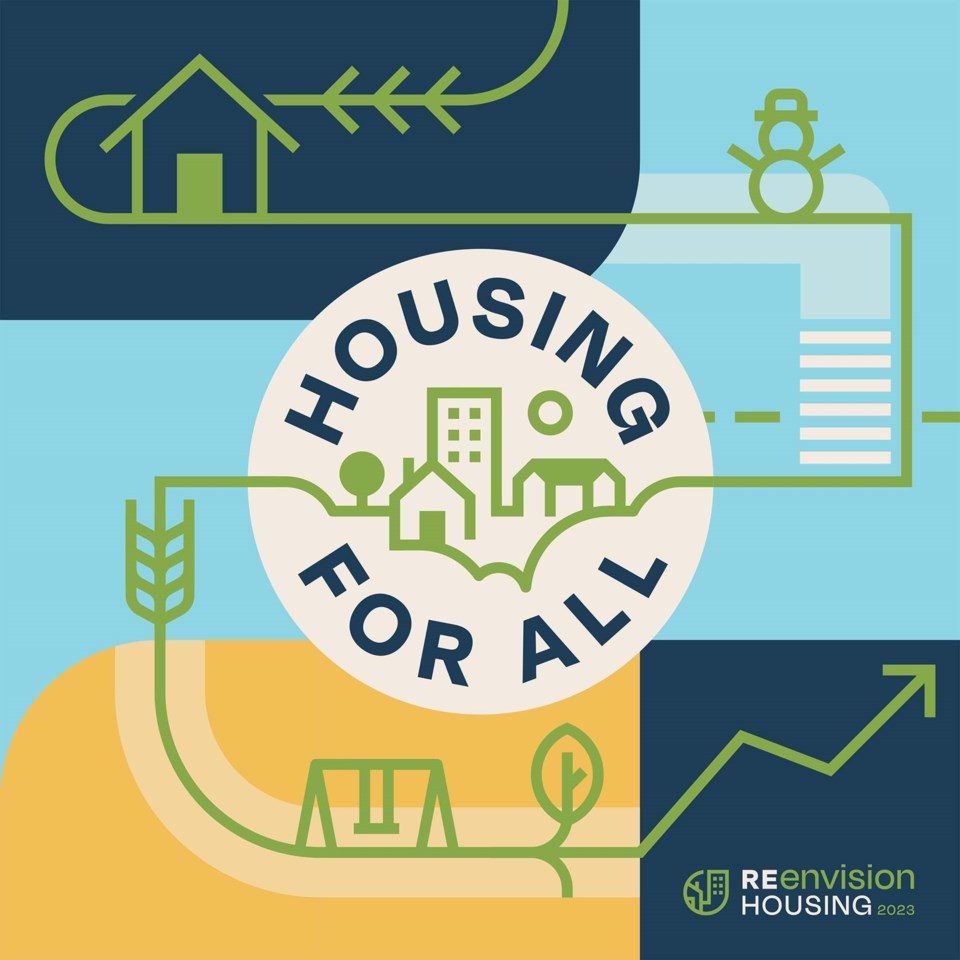Some 300 builders, thinkers, and community leaders will be in Edmonton this week to try and find solutions to the region’s housing challenges.
Some 300 people will be at the Edmonton Convention Centre Nov. 2 for the Re-Envision Housing Symposium. The sold-out event, organized by the Edmonton Metropolitan Region Board (EMRB), aims to bring government, business, and academia together to address housing issues in the Edmonton region.
This is the sixth time the EMRB and its predecessor the Capital Region Board have held a housing symposium, said EMRB CEO Karen Wichuk. The last one was held in 2016.
“We’re expected to grow by another million people and another 470,000 jobs in this region in the next 25 years,” Wichuk said, referring to projections in the board’s regional growth plan.
“We need to be ready and prepared to house those people.”
St. Albert Mayor Cathy Heron said she planned to be at the symposium, and hoped it would lead to a regional housing strategy.
“We have a regional agricultural master plan. We have a regional transportation plan. We don’t have a regional housing plan.”
The conference comes at a time when rising rents and housing costs are pushing more people onto the streets. The Canadian Mortgage and Housing Corporation projected last September Canada would need about 3.5 million more housing units by 2030 to make housing affordable again. The Edmonton Homelessness Dashboard shows a steady rise in the number of homeless people in Edmonton since 2022, with some 3,101 known homeless people in the city as of last Oct. 10.
More than money
Heron said St. Albert needs affordable housing to counteract its aging population and support local businesses.
“We can’t just build a bunch of high-end houses and a bunch of small condos and nothing in the middle.”
Joshua Evans, research lead for the University of Alberta’s Affordable Housing Solutions Lab and a speaker at the conference, said the root cause of this region’s affordable housing problem is the lack of income support for those in need. An unemployed Albertan can get up to $9,800 a year from all federal and provincial support programs, which, at less than $900 a month, is far below what they’d need for housing or to be above the poverty line.
“The root issue here is that individuals and households are receiving incomes that don’t come anywhere close to the cost of housing even in a city like Edmonton,” Evans said.
Many studies have shown homeless people get housed when you give them the money they need to afford housing, Evans continued. One study published last July in the Proceedings of the National Academy of Sciences found giving homeless people in Vancouver $7,500 caused them to spend fewer days homeless than those who did not get such money, saving society a net $777 per person. Notably, the people who got the money did not spend more money on drugs and alcohol than those that did not, instead investing the money in essentials such as food and rent.
Higher income supports could help address homelessness, but would not stop landlords from cranking up rents in response, Evans said. Rent controls, which Alberta once had, could help, as could having governments buy affordable rental properties and turn them over to non-profits (as B.C. does now).
Heron said St. Albert council changed the city’s land-use bylaws about five years ago to allow for smaller lot sizes, which is resulting in smaller, more affordable homes today. Council also transferred 22 St. Thomas Street to Homeland Housing last year to build more affordable housing.
The Gazette will have additional coverage of the conference next month.




